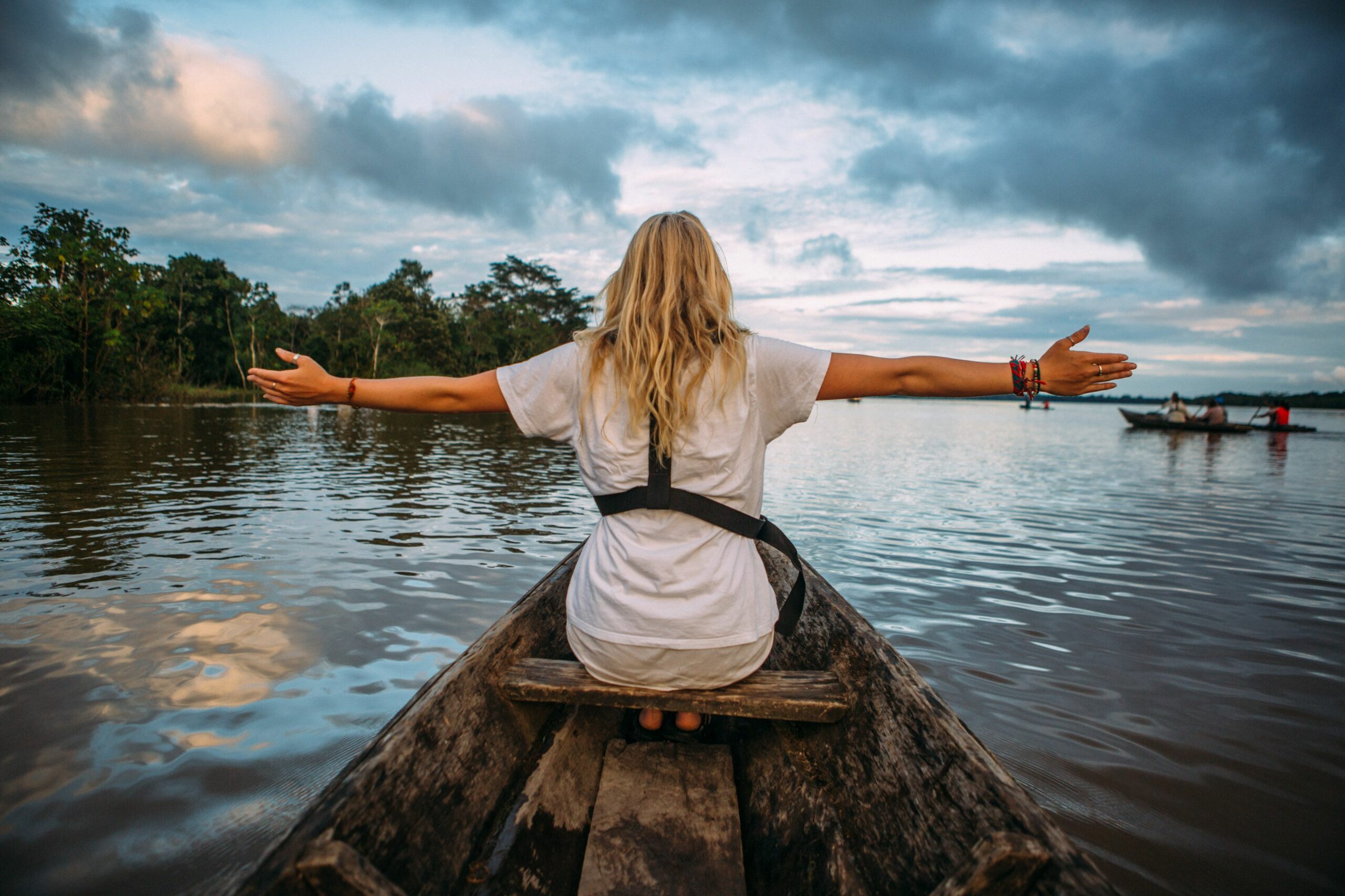Solo travel groups offer a unique blend of independent exploration and the camaraderie of shared experiences. Unlike traditional group tours, these groups cater specifically to individuals seeking adventure, relaxation, or cultural immersion while still enjoying the benefits of traveling with others. This approach allows for a balance between personal discovery and the security and logistical advantages of group travel, appealing to both introverted and extroverted personalities. This exploration delves into the advantages, challenges, and practical aspects of joining a solo travel group, offering insights into planning, preparation, and the overall experience.
We’ll examine various types of solo travel groups, comparing them to independent travel, and highlighting the social, safety, and logistical benefits. We’ll also provide practical guidance on finding the right group, preparing for the trip, managing group dynamics, and making the most of your solo travel adventure. From pre-trip planning to post-trip reflections, this guide will equip you with the knowledge and confidence to embark on a fulfilling and memorable solo group journey.
Defining Solo Travel Groups
Solo travel groups represent a unique niche within the broader travel industry, offering a blend of independent exploration and the camaraderie of shared experiences. Unlike traditional group tours, which often feature a rigid itinerary and a large group size, solo travel groups are designed specifically for individuals traveling alone, providing opportunities for socializing and connection alongside independent exploration. They cater to a growing segment of travelers seeking a balance between structured activity and personal freedom.
Solo travel groups differ significantly from traditional group tours in their emphasis on individual autonomy. While both offer organized activities and potentially discounted rates, traditional tours often involve a large group traveling together constantly, with little opportunity for independent exploration. Solo travel groups, however, are structured to allow for both guided activities and ample free time for personal pursuits, catering to a traveler’s desire for both social interaction and solitary experiences.
Types of Solo Travel Groups
The diversity of solo travel groups reflects the wide range of interests and travel styles among independent travelers. These groups are often categorized by activity type, geographic focus, or traveler demographic. This variety ensures that there is a suitable option for nearly every traveler’s preferences.
- Adventure Travel Groups: These groups focus on physically active pursuits such as hiking, trekking, kayaking, or rock climbing, often in remote or challenging locations. For example, a group might embark on a multi-day trek through the Himalayas, requiring a moderate level of fitness and a shared passion for outdoor adventure.
- Cultural Immersion Groups: These groups emphasize exploring local cultures through interactions with communities, visits to historical sites, and participation in traditional activities. An example might be a week-long trip to Japan, focusing on tea ceremonies, calligraphy workshops, and visits to ancient temples.
- Luxury Solo Travel Groups: These groups provide a high-end travel experience with luxurious accommodations, fine dining, and exclusive access to activities and events. A potential itinerary might include a tour of several European capitals, staying in five-star hotels and enjoying private guided tours of renowned museums and historical sites.
- Specific Interest Groups: Many groups cater to specific interests such as photography, wildlife viewing, food and wine tours, or volunteer tourism. For instance, a photography tour through Tuscany might focus on capturing the region’s stunning landscapes and charming villages, with instruction from professional photographers.
Advantages and Disadvantages of Joining a Solo Travel Group versus Independent Travel
The decision of whether to join a solo travel group or travel independently depends largely on individual preferences and travel style. Both options have distinct advantages and disadvantages.
| Feature | Solo Travel Group | Independent Travel |
|---|---|---|
| Cost | Potentially lower overall cost due to group discounts on accommodation and activities | Potentially higher cost, but greater control over spending |
| Social Interaction | Opportunities to meet like-minded travelers and build friendships | Limited social interaction unless actively sought |
| Structure | Structured itinerary with planned activities | Complete freedom to create your own itinerary |
| Planning | Minimal planning required, most logistics handled by the group organizer | Significant planning and research required |
| Safety | Increased safety in numbers, particularly in unfamiliar locations | Safety relies on personal awareness and preparedness |
Benefits of Joining Solo Travel Groups
Joining a solo travel group offers a unique blend of independence and camaraderie, enhancing the overall travel experience for individuals seeking adventure and connection. These groups cater to diverse personalities and travel styles, providing a supportive environment for both introverted and extroverted travelers alike. The advantages extend beyond social interaction, encompassing enhanced safety, streamlined logistics, and a richer cultural immersion.
Social Benefits for Introverted and Extroverted Individuals
Solo travel groups provide a carefully curated environment that caters to different personality types. Introverted individuals can enjoy the social aspects of travel at their own pace, engaging in group activities when comfortable and having the option to retreat for quiet time when needed. The structured nature of the group offers a sense of security and removes the pressure of constant social interaction. Extroverted individuals, on the other hand, find a ready-made social circle, fostering connections with like-minded travelers and creating opportunities for spontaneous adventures and shared experiences. The pre-planned activities and shared meals provide ample opportunities for social interaction without the need for extensive individual planning.
Safety and Security in Unfamiliar Locations
Traveling in a group significantly enhances safety and security, particularly in unfamiliar or potentially challenging environments. The shared responsibility and collective awareness create a strong sense of security, minimizing the risks associated with solo travel. Having a group of fellow travelers provides support in case of emergencies, difficulties with navigation, or unexpected situations. Furthermore, group travel often attracts less attention from potential threats compared to solo travelers who may appear more vulnerable. The presence of a group leader or guide can further enhance safety, providing local knowledge, assistance with logistics, and a point of contact in case of problems.
Logistical Advantages: Simplified Planning and Shared Resources
One of the most significant benefits of joining a solo travel group is the simplification of logistical planning. The group organizer handles the complexities of booking accommodations, transportation, and tours, freeing up the individual traveler to focus on enjoying the experience. Shared resources, such as transportation and accommodation costs, can also lead to significant savings, making travel more accessible. The shared planning and decision-making process also reduces the burden of individual responsibility, allowing for a more relaxed and enjoyable trip.
Examples of Enhanced Travel Experiences
Solo travel groups often curate unique experiences that would be difficult or impossible to replicate independently. These can range from accessing exclusive cultural events and local interactions to exploring hidden gems off the beaten path. The shared experiences and camaraderie fostered within the group create lasting memories and a deeper appreciation for the destination. For example, a group might have access to a local artisan’s workshop, participate in a traditional cooking class, or receive guided tours from local experts. These unique opportunities add layers of depth and cultural understanding that are not readily available to independent travelers.
Impact of Group Size on Travel Experience
| Group Size | Social Interaction | Cost-Effectiveness | Itinerary Flexibility |
|---|---|---|---|
| Small (4-6 people) | Intimate and close-knit group; strong bonds likely to form. | Potentially higher cost per person due to smaller economies of scale. | High degree of flexibility; easier to adapt the itinerary to the group’s preferences. |
| Medium (7-12 people) | Good balance between social interaction and individual space. | Moderate cost-effectiveness; balance between group discounts and individual costs. | Moderate flexibility; requires some compromise on individual preferences. |
| Large (13+ people) | More diverse group; opportunities to meet many new people. Can feel less personal. | Generally more cost-effective due to larger group discounts. | Lower flexibility; itinerary is more structured and less adaptable to individual preferences. |
Finding and Choosing the Right Solo Travel Group
Finding the perfect solo travel group can significantly enhance your travel experience, transforming a potentially daunting solo adventure into a rewarding and enriching journey. Careful consideration of various factors is crucial to ensure a positive and memorable trip. This section will guide you through the process of identifying reputable groups and making informed decisions.
Resources and Methods for Finding Reputable Solo Travel Groups
Several avenues exist for discovering trustworthy solo travel groups. Online platforms dedicated to adventure travel, such as Intrepid Travel, G Adventures, or Exodus Travels, often feature itineraries specifically designed for solo travelers. These companies typically have established reputations and provide comprehensive information on trip details, including group size, itinerary, and leader qualifications. Additionally, social media groups and online forums dedicated to solo travel offer valuable insights and recommendations from fellow travelers. Reading reviews on platforms like TripAdvisor can also help assess the quality and reliability of different tour operators. Finally, specialized travel agencies that cater to solo travelers can provide personalized guidance and assist in finding suitable options.
Checklist for Selecting a Solo Travel Group
Choosing the right group requires a thorough evaluation of several key aspects. A comprehensive checklist should include the following:
- Itinerary: Carefully examine the planned itinerary, ensuring it aligns with your interests and travel style. Consider the pace of the trip, the types of activities included, and the destinations visited.
- Group Size: The ideal group size is subjective and depends on your preferences. Smaller groups (under 12 people) often offer a more intimate and personalized experience, while larger groups can provide a greater sense of community.
- Cost: Thoroughly review the cost breakdown, including flights, accommodation, activities, and meals. Compare prices from different operators to ensure you’re getting a fair deal. Look for transparency in pricing to avoid unexpected charges.
- Leader Experience: Investigate the experience and qualifications of the group leader. A knowledgeable and experienced leader can significantly enhance the overall travel experience, ensuring smooth logistics and providing valuable insights and guidance.
- Trip Reviews and Testimonials: Read reviews and testimonials from previous participants to gauge their overall satisfaction with the trip and the group leader. Look for feedback on aspects such as group dynamics, the quality of accommodation, and the leader’s responsiveness.
- Safety and Support: Assess the tour operator’s safety protocols and emergency support systems. Ensure they have adequate insurance coverage and contingency plans in place.
Comparison of Different Types of Solo Travel Groups
Different solo travel groups cater to varying interests and activity levels. The table below illustrates this diversity:
| Type of Solo Travel Group | Activity Level | Typical Activities | Example Destinations |
|---|---|---|---|
| Adventure Travel | High | Hiking, trekking, kayaking, rock climbing | Nepal, Patagonia, Costa Rica |
| Relaxation and Wellness | Low to Moderate | Yoga retreats, spa treatments, beach relaxation | Bali, Thailand, Mexico |
| Cultural Immersion | Moderate | Cooking classes, historical site visits, local interactions | Italy, Japan, Peru |
| Wildlife and Nature | Moderate to High | Safari tours, wildlife photography, birdwatching | Tanzania, Kenya, Galapagos Islands |
Pre-Trip Preparations and Expectations
Embarking on a solo travel adventure with a group requires careful planning to ensure a smooth and enjoyable experience. Thorough preparation minimizes stress and maximizes your opportunities to connect with fellow travelers and fully immerse yourself in the destination. This section outlines essential pre-trip steps, from handling logistical details to fostering communication with your group.
Successful solo travel group experiences hinge on proactive preparation. Neglecting essential details can lead to unexpected complications, detracting from the overall enjoyment. Therefore, careful attention to the following aspects will significantly enhance your trip.
Visa and Vaccination Requirements
Confirming visa requirements and necessary vaccinations well in advance is crucial. Visa regulations vary significantly depending on your nationality and the destination country. Check the specific requirements on the embassy or consulate website of your destination country at least three months prior to departure. For vaccinations, consult your doctor or a travel clinic to determine which immunizations are recommended or required for your destination, considering factors such as the time of year and specific activities planned. Allow ample time for the vaccination process, including potential booster shots, and remember to carry your vaccination records.
Packing Essentials for Solo Group Travel
Creating a well-organized packing list is key to stress-free travel. Consider the climate, planned activities, and duration of your trip. Essential items typically include comfortable walking shoes, versatile clothing items, adaptable layers for varying temperatures, necessary medications, copies of important documents (passport, visa, travel insurance), a universal adapter, and a reusable water bottle. Remember to pack light to avoid excess baggage fees and make navigating airports and transportation easier. A small backpack for day trips is also highly recommended.
Communicating with the Group Organizer and Participants
Effective communication before departure is vital for a cohesive group experience. Contact the group organizer promptly to confirm your participation, clarify any questions regarding the itinerary, and address any specific needs or concerns. The organizer will likely provide a communication platform (e.g., WhatsApp group, email list) for participants to connect. Introduce yourself to other group members, share your travel expectations, and potentially arrange pre-trip meetups or virtual calls to foster camaraderie before the journey begins. This proactive communication builds a sense of community and can significantly enhance the overall experience.
Sample Itinerary: A Typical Day in a Solo Travel Group
A typical day in a solo travel group might involve a morning group activity, such as a guided walking tour or a cooking class. This is followed by some free time for independent exploration or relaxation. Lunch might be a group meal at a local restaurant, giving participants the chance to socialize and share experiences. The afternoon could include another group activity, perhaps a visit to a museum or a scenic hike, followed by more free time. Evenings often involve a group dinner, allowing further opportunities for bonding and sharing travel stories. This structured yet flexible format allows for both shared experiences and individual exploration.
Post-Trip Reflections and Recommendations
Returning from a solo travel group adventure leaves you with a wealth of experiences and memories. Taking the time to reflect on your journey, both the highs and lows, allows you to fully appreciate the transformative power of the experience and prepare for future adventures. This process also helps solidify the bonds formed with your fellow travelers and allows you to carry the positive aspects of the trip forward into your daily life.
Documenting and preserving memories from a solo travel group experience is crucial for retaining the vibrancy and details of your journey. A multi-faceted approach ensures that you capture both the big picture and the smaller, more intimate moments.
Memory Preservation Methods
Several methods effectively preserve the memories of your solo travel group experience. Journaling allows for immediate reflection and detailed descriptions of feelings and emotions. Photo albums, either physical or digital, capture the visual aspects of your trip. A travel blog offers a platform to share your experiences with a wider audience, and also serves as a personal record. Consider creating a scrapbook combining photos, mementos (like tickets or postcards), and journal entries to create a truly unique and personalized keepsake. For example, imagine a scrapbook page with a photo of your group at a landmark, alongside a journal entry detailing the humorous miscommunication you experienced trying to order food, and a ticket stub from the local market you visited. This blend of media provides a rich and layered narrative.
Maintaining Connections with Fellow Travelers
Connecting with fellow travelers after the trip helps extend the enriching experience beyond the duration of the travel itself. Creating a shared online space, such as a private Facebook group or a WhatsApp chat, allows for continued communication and the sharing of photos and stories long after you’ve returned home. This fosters a sense of community and provides an avenue for planning future trips together. For instance, a group could organize virtual get-togethers to reminisce about shared experiences or plan a reunion trip to a new destination. Individual communication, such as exchanging emails or connecting on social media platforms, allows for maintaining individual bonds formed during the trip.
Influence on Future Travel Plans
Participating in a solo travel group significantly impacts future travel plans. The experience of traveling with a group provides confidence and encourages independence, leading to a greater willingness to explore solo travel in the future. You might find yourself gravitating towards destinations similar to those visited in the group trip, or you might branch out to completely new and different locations, inspired by the experiences and perspectives shared by your fellow travelers. For example, a group trip to Southeast Asia might inspire one participant to plan a solo backpacking trip through South America, while another might opt for a more structured solo trip to a specific region of Southeast Asia that particularly resonated with them. The newfound comfort and knowledge gained from group travel empowers individuals to tailor future adventures to their own specific interests and preferences, creating more personalized and fulfilling travel experiences.
End of Discussion
Ultimately, the decision to join a solo travel group hinges on individual preferences and travel styles. While independent travel offers unparalleled freedom, solo travel groups provide a supportive network, logistical ease, and enhanced safety, especially in unfamiliar territories. By carefully considering your travel goals, personality, and the specific group dynamics, you can unlock a unique and rewarding travel experience that blends the best aspects of independent exploration with the benefits of shared adventures. Embrace the opportunity to connect with like-minded individuals, explore new destinations, and create memories that will last a lifetime.




